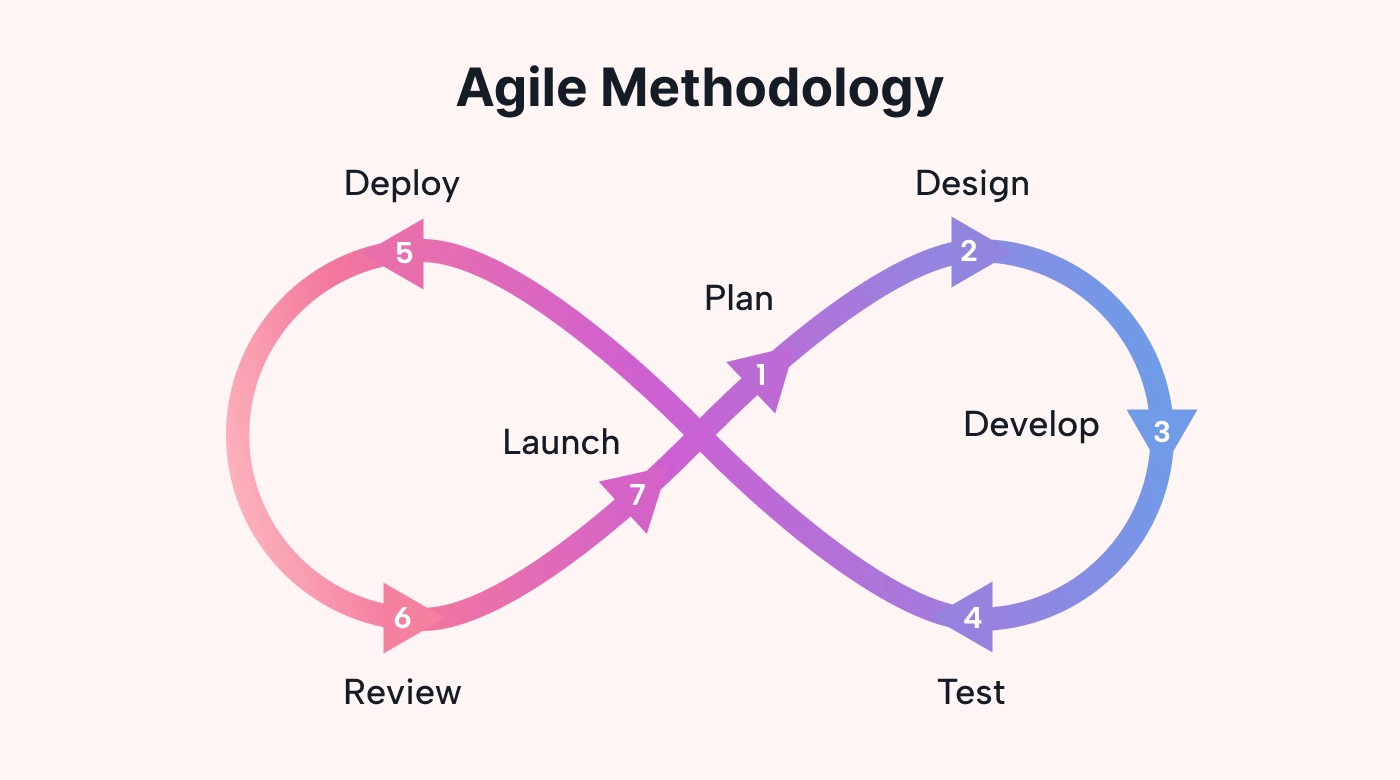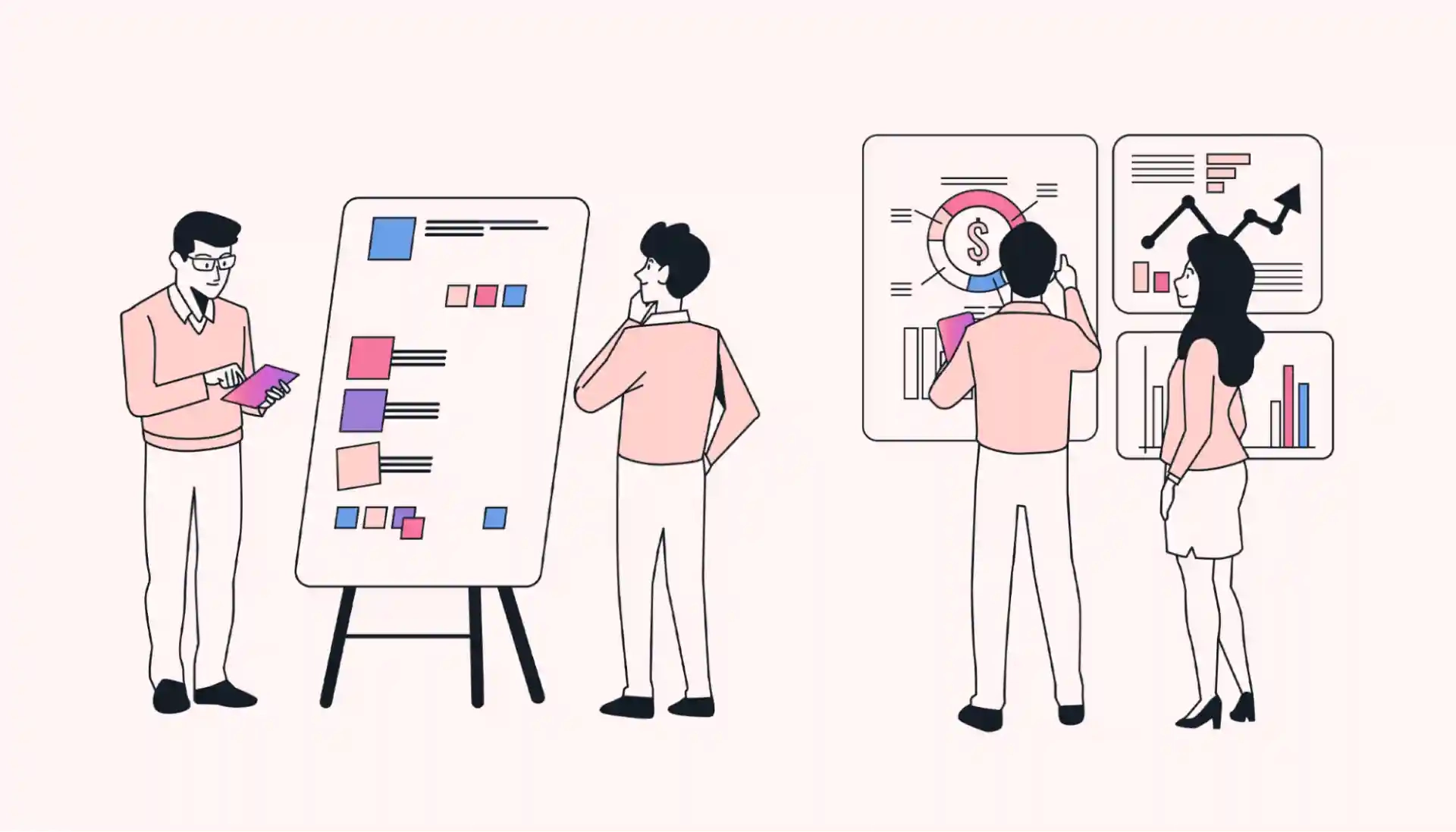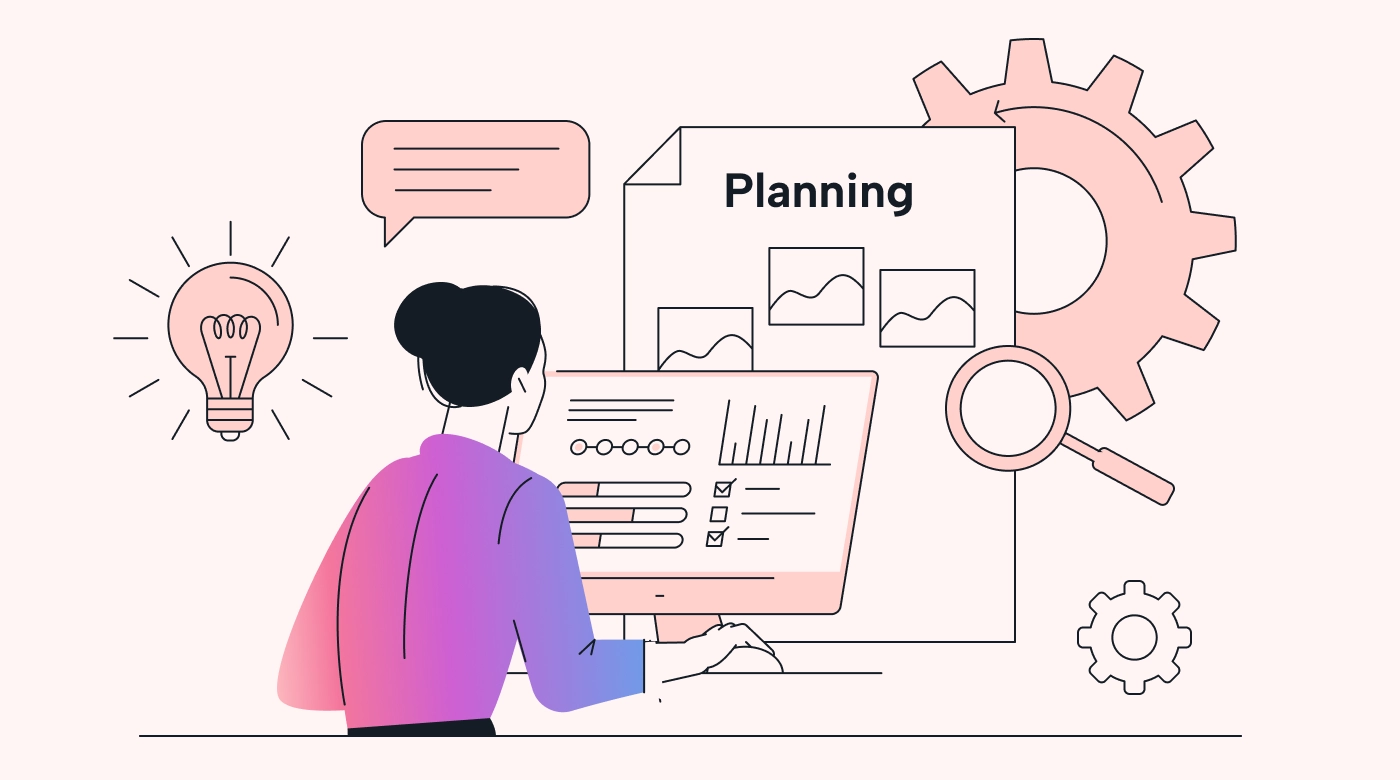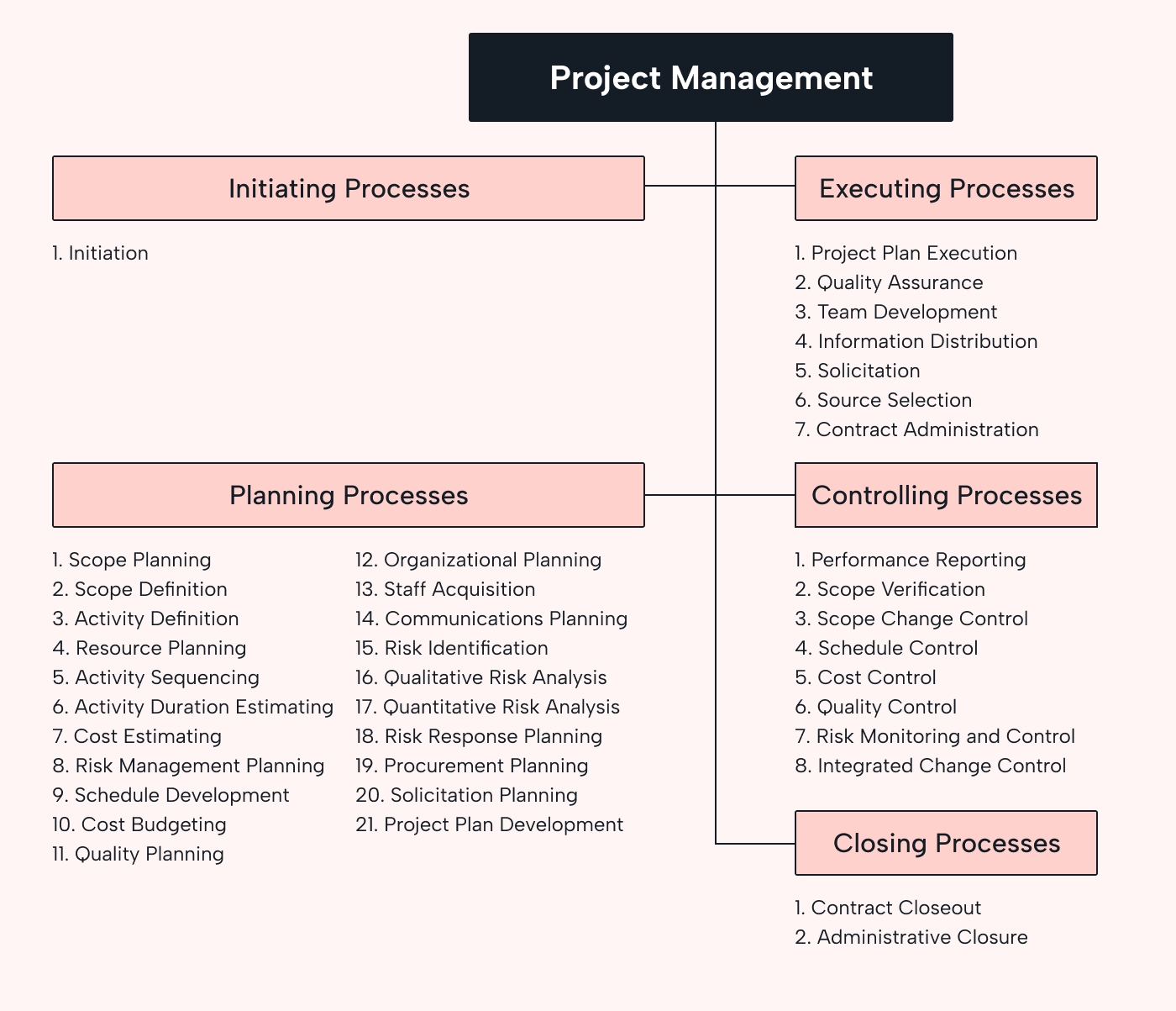Have you got more projects going on than being delivered successfully? You're not alone.
In fact, according to research by McKinsey, roughly 45% of projects go over budget. 56% don't give as much bang for the buck as expected, and about 7% are delivered late.
It might surprise you, but the key lies in a phase that many project managers and business owners skip: the discovery phase.
Maybe you think you don't have enough time to spend researching user requirements, user journeys, or doing market surveys (when your potential users or clients want their projects right now), but the truth is, you can't afford NOT to spend the time.
In this article, we'll show you why the discovery phase is the most important stage of the project management lifecycle.
What is the project discovery phase?
The project discovery stage is the initial stage of a project where key stakeholders, such as clients, project managers, and team members, come together to define the project's goals, objectives, scope, and requirements.
It's the "getting to know you" phase, where everyone figures out what the project is all about — what you're aiming to do (requirements), what you need to get there (resources), and what could trip you up (risk).
During this discovery process, the focus is gathering information, conducting research, and analyzing data to understand what needs to be accomplished, project risks, and how you'll achieve it.
The project discovery phase sets the foundation for your entire project and is a central part of the planning phase.
It helps you to align stakeholders around the project vision, set expectations, minimize misunderstandings, and reduce the likelihood of costly changes or delays later in the project lifecycle.
While it seems like a lot of upfront work, a thorough and well-executed discovery phase increases the chances of you and your team delivering a successful project that meets the needs of everyone involved.
It's a bit like drawing a map before you start a journey, except in this case, you're gathering everything you need before you start a project.
What is the goal of the project discovery phase?
The discovery phase aims to understand what the project needs, its potential risks, costs, and how doable it is. Specifically, this means:
- Getting everyone on the same page on the product vision.
- Figuring out what resources are needed to make it happen.
- Ginning up an accurate estimate.
- Checking if it’s possible with the resources and tech available
- Identifying potential risks early on.
It’s about ensuring everyone agrees, minimizing problems, and setting a clear path for the project.
Where does discovery fit into the project management lifecycle?
The PMI project management lifecycle is a series of stages or phases a project goes through, from idea to final delivery. It has five stages.
Project initiation: This is where the project begins. It's like setting the stage for a play. You define the project, identify stakeholders, and establish its purpose and goals. Think of it as laying down the blueprint.
Planning: Like mapping out a road trip, this stage involves creating a detailed plan of how your team will achieve your project goals. You break down tasks, allocate resources, set project timelines, and establish project budgets. This is where the discovery phase lives.
Execution: Also called product development, this is where the action happens. You and your project team roll up your sleeves and start working on the tasks outlined in the plan.
Monitoring and controlling: This is where you keep a close eye on progress, make adjustments as needed, and ensure everything is progressing as planned. If you're not sticking to the plan in this phase, you'll uncover why and change course to get everyone back on track.
Closure: Time to wrap things up. You review the project to see if goals were met, celebrate successes, and identify areas for improvement.
But what if you don’t follow a traditional project management approach like Waterfall?
Project discovery in Agile
In Agile, discovery isn’t just a one-and-done event in the planning phase (like in Waterfall). Instead, it’s woven throughout the entire project lifecycle.
Sure, you kick things off with an initial “draft” discovery phase to get a rough idea of what you’re trying to achieve, but the real magic of Agile is that you keep revisiting and refining these ideas as you progress.
In frameworks like the Software Development Life Cycle (SDLC), discovery is the foundation phase after you’ve completed your project initiation. After you have decided on a concrete idea (initiation), you do a deep dive into planning to figure everything out before you hit the gas on development.
Agile flips this on its head a bit with something called discovery sprints. These are short, focused bursts where teams rapidly gather requirements, test out ideas, and make sure they're aligned with user needs and project goals. It's ensuring you're doing the right work at the right time.
Project discovery in action
Take a company that manages software development projects as an example.
The project manager, business analysts, designers, and the development team, along with the client, would review the goals of the planned mobile app, its target audience (and features and functionality requirements).
The discovery team would conduct market analysis to analyze similar apps in the market to find any strengths, weaknesses, or opportunities to make their app stand out.
This phase is about clarifying the project's scope and objectives. The business analysts document everything, including user stories and any technical specifications.
By the end of the project discovery phase, the team (and the client) should have an easy-to-follow project roadmap for the technical solution.
Why is discovery so important?
The discovery phase is essential for a few key reasons:
Clear objectives
It helps everyone involved understand what the project aims to achieve early on, so there's no second-guessing when development starts.
Risk mitigation
By spotting potential problems early on, project teams can devise ways to deal with them before they become significant issues.
Efficient resource use
Figuring out what’s needed upfront means resources like time, money, and people can be used more effectively.
Getting everyone on board
By involving everyone and the kitchen sink in the discovery phase, you ensure everyone's needs and ideas are considered early on. This is also a great way to build transparency into the project lifecycle.
Feasibility
It’s essential to see if the project is doable and fits within budget, time, and technology constraints. No one wants to get halfway through a project only to realize it’s not viable.
Scope
One of the most prevalent silent project killers is scope creep. Setting clear boundaries for the project helps prevent it from expanding endlessly and keeps things on track.
The discovery phase provides a solid foundation for doing the work later during the project development process. It’s a crucial step that helps set the stage for a successful project by sorting out potential problems, aligning everyone’s expectations, and ensuring everyone knows what they’re working towards.
What are some key discovery artifacts?
The key artifacts or documents you’ll want to get familiar with include:
- Requirements document: A detailed list of functional and non-functional project requirements gathered from stakeholders. This could also include business requirements and objectives.
- Stakeholder/user interviews: Summaries or transcripts of stakeholder discussions to capture their needs, expectations, and priorities. These will guide your project objectives.
- Market research report: This includes findings from market analysis, including trends, competitors, and opportunities or potential challenges.
- Risk register: This document lists potential risks, their impact, and proposed mitigation strategies.
- Feasibility study report: An assessment of the project’s technical, financial, and operational feasibility, including any constraints or limitations.
- Project Scope definition document: This defines the precise project boundaries and key deliverables to establish a shared understanding of what'll be included.
These artifacts serve as valuable reference points and guiding documents for the project team throughout the project lifecycle, ensuring alignment, minimizing misunderstandings, and supporting informed decision-making.
8 steps to complete a comprehensive discovery phase without delaying your project
Here's how to tackle the discovery process:
1. Gather requirements and set clear goals:
Define what you want to achieve from the start.
For example, if you plan to launch a new product, your goal might be understanding your target market and their needs.
Start with user and stakeholder interviews. By chatting with stakeholders, like clients, to understand what they want, need, and expect from the project, you can create an accurate plan to meet business goals while keeping everyone happy.
Gather all the technical requirements, ensuring you’ve got a clear list of what the project needs to achieve.
Then, do some digging with market research, check out the competition, look for trends, and find out where the opportunities and challenges lie.
2. Plan your timeline
Break down the discovery phase into smaller tasks and set deadlines. This could involve scheduling weekly time to research your market or meet with potential customers.
3. Focus on the essentials
Prioritize tasks that'll have the most significant impact on your business.
For instance, if you're deciding between different marketing strategies, focus on the ones that align best with your target audience and budget.
Look for potential challenges and risks that might pop up and figure out how you can manage them to keep the project on track.
4. Use your resources wisely
Delegate tasks to team members or seek assistance from freelancers or consultants. Make sure everyone knows what they’re responsible for and has the tools they need to succeed.
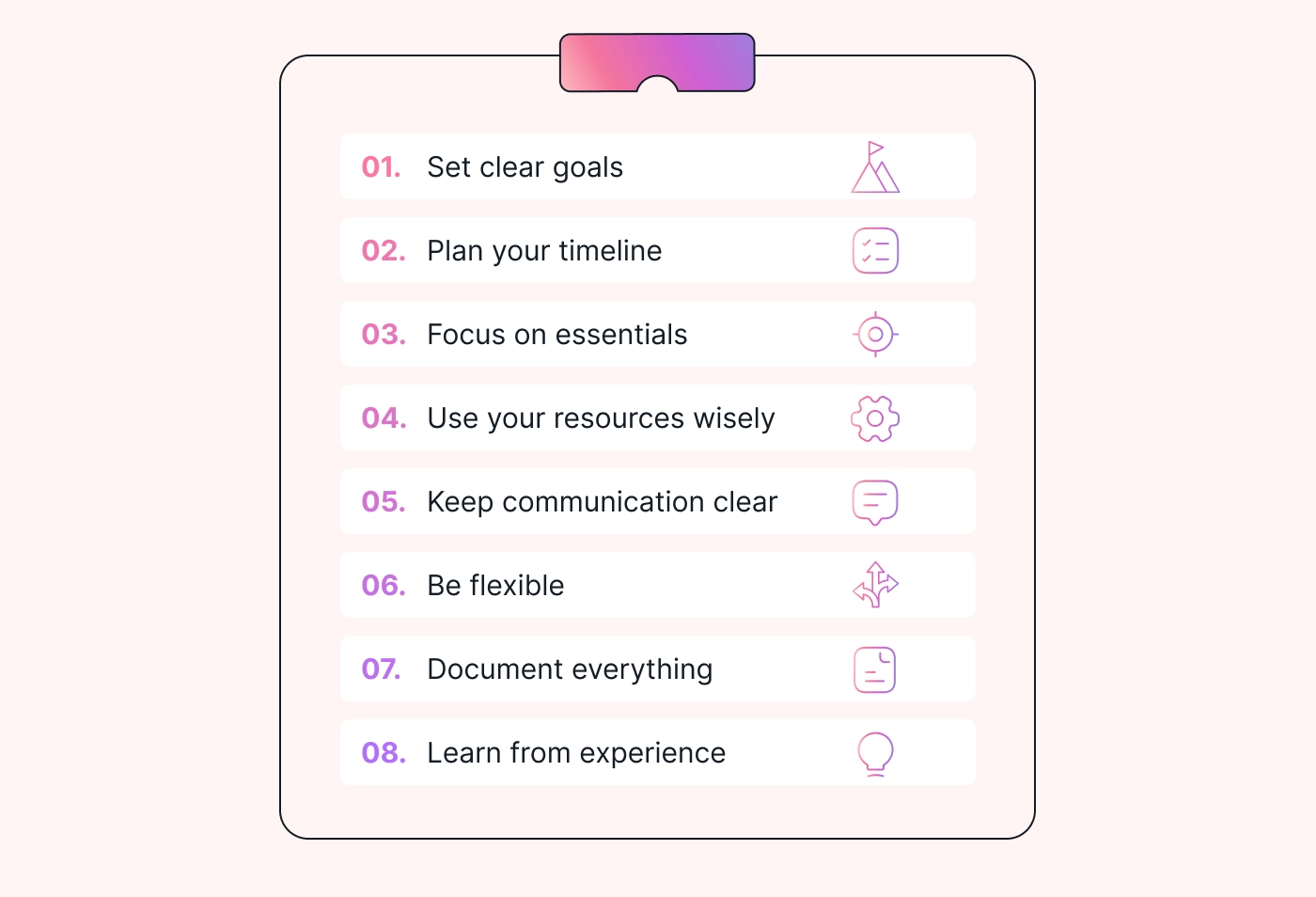 |
5. Keep communication clear
Regularly touch base with your team to ensure everyone is on the same page. Use tools like Slack or Trello to keep communication organized and efficient.
6. Be flexible
Stay open to new ideas and feedback (especially from real users). If a particular approach isn't working, don't be afraid to pivot and try something else.
7. Document everything
Keep detailed notes of your findings and decisions. This will help you stay organized and avoid overlooking important details.
Get down to brass tacks with a feasibility study, ensuring objectives can be met from a technical, financial, and operational standpoint and any project complexities are accounted for.
Last but not least, define the project's scope in your documentation, laying out precisely what’s in and out to ensure everyone’s on the same page.
8. Learn from experience
After completing the discovery phase, take some time to reflect on what worked well and what didn't. Use this knowledge to improve your processes for future projects.
By following these steps and staying focused on your goals, you can complete a comprehensive discovery phase without losing time, setting you up for project success.
Three pro tips for a streamlined and successful project discovery phase
1. Involve your team in brainstorming
- It doesn’t all have to fall on your shoulders — involve your team in brainstorming.
- Get everyone together for brainstorming sessions to gather ideas and insights.
- Use interactive activities like whiteboarding or group discussions to encourage participation.
- Capture everyone's input in your project management software.
2. Create visual and quick prototypes
- Develop simple prototypes or mock-ups of project ideas to visualize concepts. This will make approving or dropping ideas that don’t meet project needs quicker.
- Use easy-to-use tools (even pen and paper) to create mindmaps of ideas so it’s easier to input tasks into your collaboration tools later.
- Gather feedback and refine ideas quickly in one central place so you can see the progress of your discovery. You can also pull vital lessons learned from here to improve future projects.
3. Use an AI-driven project management assistant
- Use an AI-driven project management assistant to help with repetitive tasks like scheduling meetings or sending reminders.
- Centralize your discovery documentation and feedback so your team can access everything they need in one place and as needed.
- Let automated scheduling manage your team’s daily workload so there is more room for discovery.
You wear enough hats as it is. Let a project-planning AI assistant carry your mental load for you.
Level up your project planning with Motion
While it might seem like a big-time investment upfront, incorporating project discovery into your project lifecycle will save you so much in wasted resources (and frustrated clients) in the long run.
Motion is here to make it as simple as possible.
With smart scheduling that sets your team up for optimal productivity and a centralized platform to manage your projects from discovery through the entire lifecycle, there's no better time to embrace the future of project planning. Commit to better discovery, and Motion will do the rest.

Haylee is a versatile writer with ten years of experience. With a background in marketing and writing for large SaaS companies, Haylee brings her passion for the written word to diverse projects ranging from blog posts and ebooks to direct marketing campaigns.


